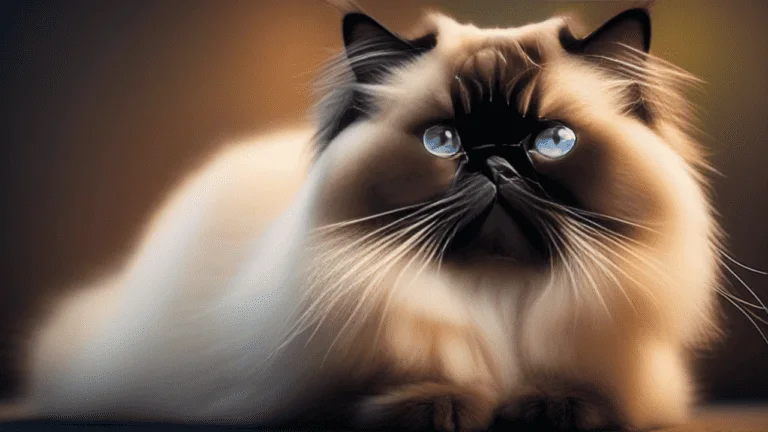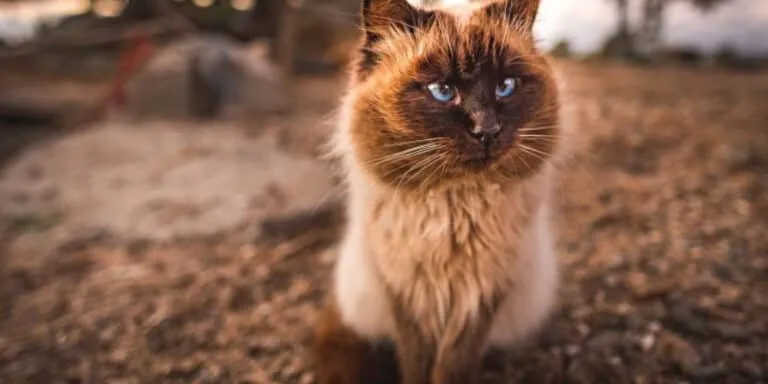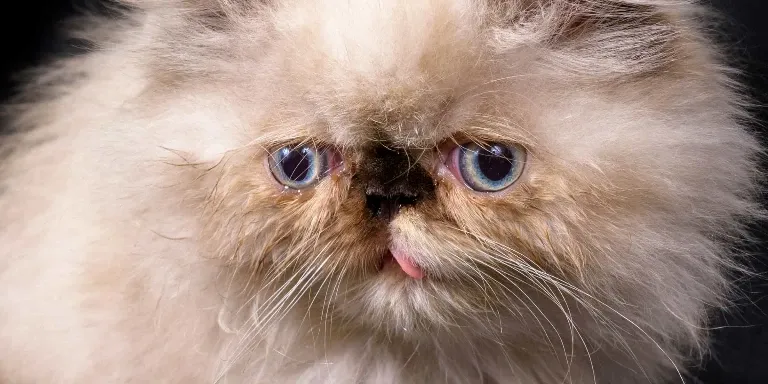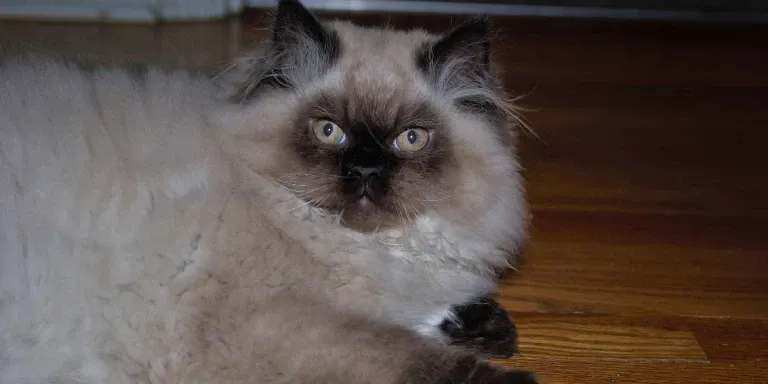The Best Fluffy Pancakes recipe you will fall in love with. Full of tips and tricks to help you make the best pancakes.
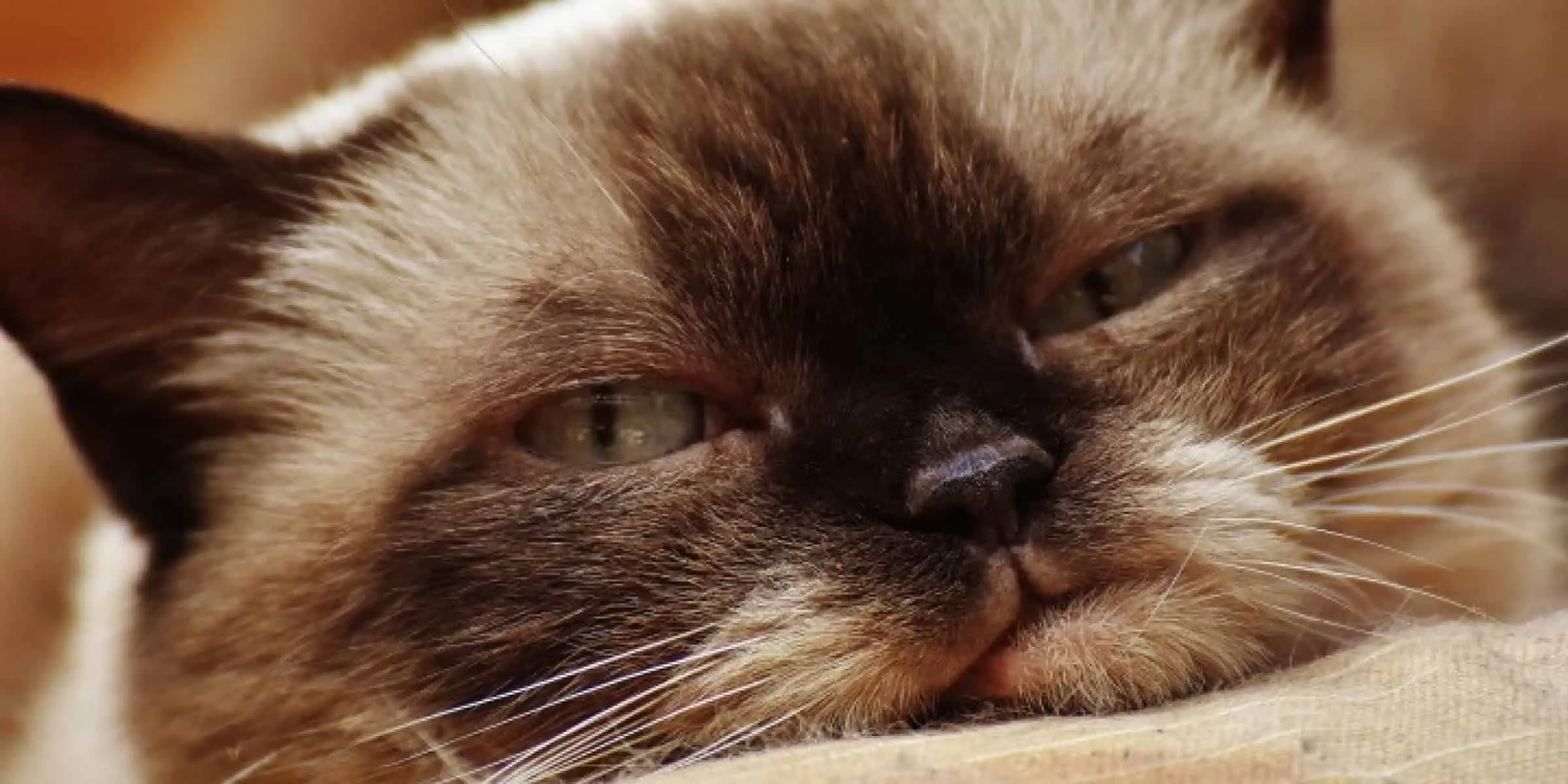
If you’re considering adopting a Himalayan cat, you may be wondering if they make good pets. The answer is, it depends on your lifestyle and preferences.
Himalayan cats are known for their beautiful appearance, affectionate nature, and calm demeanor, but they also have specific needs and requirements that may not be suitable for everyone.
Himalayan cats can make great pets for the right owner. They are known for being gentle, affectionate, and playful. However, they require regular grooming due to their long hair and can be prone to health issues such as respiratory problems and kidney disease.
In this article, we’ll explore the breed characteristics of Himalayan cats, their grooming needs, living environment, training and socialization, exercise and playtime, nutrition and feeding, health and vet care, and considerations for adoption.
By the end of this article, you’ll have a better understanding of whether a Himalayan cat is the right pet for you and your family. So, let’s dive in and discover if a Himalayan cat is the purrfect addition to your home!
Breed Characteristics of Himalayan Cats
If you’re looking for a feline companion with a calm and affectionate demeanor, you can’t go wrong with Himalayan cats. These cats are known for their gentle personalities and are a great choice for families with children or other pets. They’re also highly intelligent and easy to train, making them ideal for first-time cat owners.
In addition to their temperament, Himalayan cats are also known for their beautiful, fluffy coats. Their coats come in a variety of colors, including chocolate, lilac, and blue. The color of a Himalayan cat’s coat is determined by their genetics, but all Himalayan cats have the same pointed pattern, with darker fur on their faces, ears, legs, and tails.
Regular brushing and grooming are necessary to keep their coats looking their best, but the effort is well worth it for the stunning appearance of these felines.
Grooming Needs
Maintaining their luxurious coat can be a challenge, with regular brushing required at least three times a week to prevent matting and hairballs, which can lead to digestive problems.
Did you know that grooming is the primary reason why many Himalayan cat owners seek professional grooming services? These cats have long, thick fur that requires a lot of attention to keep it healthy and shiny.
Regular brushing helps distribute natural oils throughout the coat, preventing it from becoming greasy or matted. It also removes loose hair and prevents hairballs from forming in the digestive system.
Professional grooming services can help keep your Himalayan cat’s coat in top condition, and they can also provide additional services such as nail trimming and ear cleaning.
Remember, a well-groomed Himalayan cat not only looks beautiful but is also much healthier and happier.
Living Environment
Creating a comfortable living environment for your Himalayan cat is crucial to ensure that they feel safe and happy. When it comes to living arrangements, you have two options: indoor or outdoor. Himalayan cats are best kept indoors as they’re not very adaptable to extreme temperatures, and their long fur can easily get tangled and matted if they spend a lot of time outside. Additionally, keeping your cat inside protects them from potential dangers such as cars, predators, and diseases.
Choosing between an apartment or a house can also have an impact on your cat’s quality of life. If you live in an apartment, make sure you provide plenty of vertical spaces and scratching posts for your cat to climb and scratch on. You can also invest in a cat tree or a window perch to provide them with a comfortable and stimulating environment.
If you live in a house, consider creating an outdoor enclosure or a catio to give your cat access to fresh air and sunshine while keeping them safe from harm. Ultimately, the most important factor is to provide your Himalayan cat with a cozy and secure living environment that meets their individual needs and preferences.
Training and Socialization
To truly bond with your Himalayan cat, you must make sure to provide them with obedience training and socialization opportunities. Obedience training is essential for your pet to understand the boundaries and rules of your home, while socializing with other pets can help them become more comfortable and friendly.
Himalayan cats are generally calm and affectionate, but they still require proper training to avoid any destructive behavior. You can start with basic commands such as ‘sit’ and ‘stay,’ and gradually move onto more advanced training. Consistency and patience are key when it comes to training your pet, and positive reinforcement can go a long way in encouraging good behavior.
Additionally, socializing your cat with other pets can help them develop better communication skills and reduce any potential aggression towards other animals. By introducing your Himalayan cat to other pets early on, you can ensure that they grow up to be well-adjusted and friendly companions.
Exercise and Playtime
When it comes to exercise and playtime for your Himalayan cat, there are several key points to keep in mind.
First, it’s important to ensure that your cat gets enough physical activity each day to maintain a healthy weight and prevent boredom. Interactive toys and games can help keep your cat engaged and mentally stimulated, while also providing a fun way to bond with your pet.
Additionally, incorporating mental stimulation into your cat’s daily routine can help prevent behavioral issues and keep your cat happy and healthy.
Recommended Physical Activity
Engaging in regular playtime with your Himalayan cat can help keep them physically active and mentally stimulated, leading to a happier and healthier pet. Unlike outdoor cats, indoor cats have limited opportunities to run, climb, and explore. Therefore, it’s important to provide them with age-appropriate toys and activities that can mimic the experience of being outdoors.
For younger cats, interactive toys such as feather wands or laser pointers can be a great way to engage them in physical activity. Older cats may prefer slower-paced activities such as puzzle feeders or catnip toys. It’s important to rotate toys regularly to prevent boredom and maintain their interest.
Additionally, dedicating a specific time each day for playtime can help establish a routine and ensure that your Himalayan cat is getting enough exercise. By incorporating physical activity into their daily routine, you can help ensure that your Himalayan cat remains healthy and happy.
Interactive Toys and Games
Now that you know the recommended physical activity for your Himalayan cat, let’s talk about interactive toys and games. These playful felines are known for their love of playtime, and interactive toys can provide both physical and mental stimulation for your furry friend.
There are plenty of DIY toy ideas for your Himalayan cat that you can easily make at home. For example, you can create a simple puzzle box by cutting holes in a cardboard box and filling it with treats or toys. You can also make a wand toy by attaching feathers or a small toy to a stick. These toys not only provide entertainment for your cat, but they also help them stay active and engaged.
The benefits of interactive playtime with your Himalayan cat are numerous, including improving their physical health, mental well-being, and bonding with their owner. So, make sure to set aside some time each day to play with your furry friend and enjoy the benefits of interactive playtime.
Mental Stimulation
To keep your Himalayan cat mentally stimulated and healthy, it’s crucial to incorporate enrichment activities into their daily routine. These activities can range from providing interactive toys and games, such as puzzle boxes and wand toys, to setting up obstacle courses and hiding treats for them to find.
Mental stimulation is just as important as physical exercise for your feline friend, and it can prevent boredom and destructive behaviors. One way to provide mental stimulation for your Himalayan cat is through puzzle boxes, which require them to use their problem-solving skills to access hidden treats. Wand toys are also excellent for engaging your cat’s hunting instincts and providing them with an outlet for their natural prey drive.
Remember to rotate the toys and games regularly to keep your cat interested and engaged. By incorporating mental stimulation into your cat’s daily routine, you can help them maintain their mental health and prevent behavioral issues.
Nutrition and Feeding
When it comes to owning a Himalayan cat, it’s important to know about their nutritional requirements, feeding schedule, and hydration needs.
These fluffy felines have specific dietary needs that should be met through a balanced and high-quality diet.
In terms of feeding schedule, it’s recommended to give them small, frequent meals throughout the day to prevent overeating and obesity.
Additionally, ensuring they have access to fresh water is crucial for their overall health and well-being.
Nutritional Requirements
Feeding Himalayan cats a balanced diet with high-quality cat food is essential for their overall health and well-being. As with any breed of cat, Himalayans have specific nutritional requirements that need to be met in order to keep them healthy and happy.
It’s important to note that Himalayans are prone to common allergies and may require specialized diets to avoid any allergic reactions. When choosing a cat food for your Himalayan, it’s important to look for high-quality ingredients, such as real meat and vegetables.
Avoid cat foods that contain fillers, by-products, and artificial preservatives, as these can cause digestive issues and lead to obesity. Additionally, Himalayans require a higher amount of protein in their diet compared to other breeds of cats, so be sure to choose a cat food that has a high protein content.
By providing your Himalayan with a balanced and nutritious diet, you can help ensure that they live a long and healthy life.
Feeding Schedule
You’ll want to establish a regular feeding routine for your fluffy Himalayan cat to keep them healthy and satisfied. Feeding frequency and portion control are both important factors to consider when planning your cat’s meals.
Generally, adult cats need to be fed twice a day, with a recommended amount of food based on their weight and activity level. It’s important to measure out your cat’s food to avoid overfeeding, which can lead to obesity and other health problems.
In addition to frequency and portion control, it’s also important to choose high-quality cat food that meets all of your cat’s nutritional needs. Look for foods that contain a balance of protein, fat, and carbohydrates, as well as vitamins and minerals.
Avoid foods that contain fillers or artificial ingredients, as they can be harmful to your cat’s health. With a proper feeding schedule and a balanced diet, your Himalayan cat will be well-fed and happy.
Hydration
Now that you’ve established a feeding schedule for your Himalayan cat, it’s important to pay attention to their water intake habits. Hydration is just as important as nutrition when it comes to keeping your cat healthy and happy.
It’s crucial to make sure that your cat always has access to fresh, clean water. The importance of hydration cannot be overstated. Water is essential for your cat’s bodily functions, including digestion, circulation, and waste elimination. Dehydration can lead to serious health problems, such as urinary tract infections and kidney disease.
To ensure that your Himalayan cat is properly hydrated, provide them with a water dish that is cleaned and refilled daily. You can also add a water fountain to entice your cat to drink more water, as cats are often attracted to moving water. By paying attention to your cat’s water intake habits, you can help prevent health issues and keep your furry friend happy and hydrated.
Health and Vet Care
If you’re thinking about getting a Himalayan cat, make sure you take them to the vet regularly to ensure they stay healthy and happy. Preventative measures are key to keeping your feline friend healthy.
The following list outlines some common illnesses that Himalayan cats are prone to, and what you can do to prevent them:
- Polycystic kidney disease: This is an inherited condition that affects many Himalayan cats. Regular check-ups with your vet can help catch this disease early, so it can be treated before it causes serious damage.
- Respiratory infections: Himalayans have a short nose and flat face, making them more susceptible to respiratory infections. Make sure you keep their living space clean and free of dust, and avoid exposing them to extreme temperatures.
- Dental issues: Himalayans are also prone to dental problems, such as gum disease and tooth decay. Regular teeth cleanings and check-ups can help prevent these issues.
- Obesity: Himalayan cats have a tendency to gain weight, so it’s important to monitor their diet and exercise. Provide them with a healthy diet and play with them regularly to keep them active and healthy.
Regular vet visits and preventative measures can help keep your Himalayan cat healthy and happy. By staying on top of their health needs, you can ensure that they live a long and fulfilling life by your side.
Considerations for Adoption
Perhaps ponder the practicalities of potentially procuring a pedigree pal, weighing the work and worth of welcoming a whiskered wonder into your world. Before adopting a Himalayan cat, there are some considerations to keep in mind to ensure a smooth transition into your home.
First and foremost, be prepared for the behavioral challenges that come with owning a cat. Himalayan cats are known to be intelligent and curious, which can lead to mischievous behavior if they become bored or understimulated.
When adopting a Himalayan cat, it’s important to provide plenty of mental and physical stimulation to prevent destructive behavior. This can include providing toys, scratching posts, and opportunities for exercise and play.
Additionally, these cats require regular grooming to maintain their long, luxurious coats, which can be a time-consuming task. However, the love and companionship a Himalayan cat can provide makes the effort worthwhile.
With proper care and attention, a Himalayan cat can make a wonderful addition to any loving home.
Are Himalayan Cats Good Pets for Families with Children?
Himalayan cats make excellent pets for families with children due to their gentle himalayan cat behavior traits. Known for being affectionate and mild-mannered, they are great with kids and are low maintenance. Their calm nature and playful demeanor make them a wonderful addition to any family looking for a loving feline companion.
Conclusion
So, are Himalayan cats good pets? Overall, the answer is yes – but it depends on your lifestyle and preferences.
These felines are known for their affectionate and calm personalities, making them great companions for families and individuals alike. However, they do require a fair amount of grooming and attention, so be prepared to invest time and effort into keeping them healthy and happy.
One interesting statistic to consider is that Himalayan cats are more prone to respiratory issues than other breeds, due to their flat faces and shortened airways. This means that they may require more frequent vet visits and specialized care.
However, with proper attention and care, these beautiful cats can make wonderful additions to any household. Ultimately, the decision to adopt a Himalayan cat should be based on careful consideration and a willingness to provide them with the love and care they deserve.

